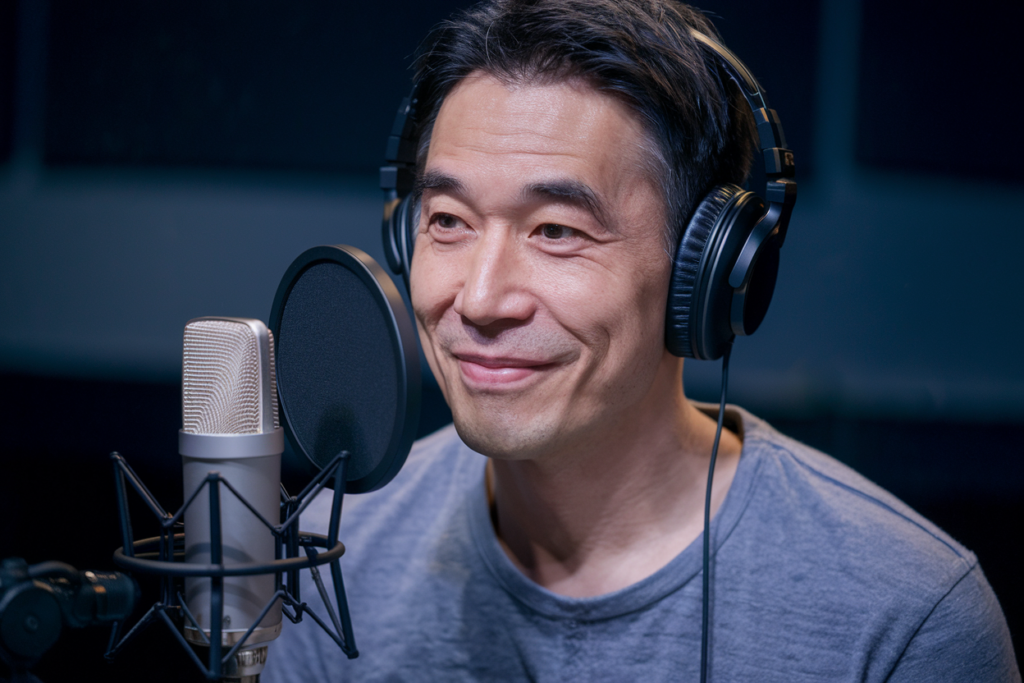Key Takeaways
- Enhancement of Viewing Experience: Japanese subtitles significantly improve comprehension and engagement, especially in anime and culturally rich films.
- Cultural Insights: Accurate subtitles provide essential context for humor, idioms, and cultural references, deepening the viewer’s understanding of character motivations and plot developments.
- Accessibility: Subtitles break down language barriers, enabling non-Japanese speakers to fully appreciate content and fostering a larger community around shared interests.
- Types of Subtitles: Understanding different subtitle formats—live versus pre-recorded—helps creators choose the most suitable option for their specific content needs.
- Best Practices for Quality: Focus on language accuracy and proper timing to create effective subtitles that resonate with audiences while enhancing immersion in the viewing experience.
- Tools for Creation: Utilizing subtitle editing software or online services streamlines the subtitle creation process, ensuring high-quality output that respects the original intent of the content.
Ever wondered how Japanese subtitles can transform your video experience? Whether you’re diving into anime or exploring Japanese culture through films, having accurate subtitles makes all the difference. They not only enhance understanding but also immerse you in the nuances of the language.
Overview of Japanese Subtitles for Video Guide
Japanese subtitles enhance your viewing experience, especially when exploring anime and films rooted in Japanese culture. Accurate and well-timed subtitles play a crucial role in comprehension, allowing you to immerse yourself in the nuances of the language and storytelling.
Subtitles serve not just as translations but also as cultural bridges. They provide context that might be lost without them. When you watch a film or show with Japanese subtitles, elements like humor, idioms, and cultural references become accessible. This opens up a deeper understanding of character motivations and plot developments.
Moreover, you might notice how voiceovers complement subtitle experiences. A skilled voice artist can infuse emotions into the dialogue that aligns with what’s displayed on screen. The synergy between quality voice acting and accurate subtitling enhances overall engagement, making scenes more impactful.
Whether you’re producing content or enjoying media, ensuring high-quality Japanese subtitles is essential. They enrich narratives while respecting the original language’s integrity—ultimately providing an authentic experience for viewers like you who seek connection through stories told across cultures.
Importance of Japanese Subtitles
Japanese subtitles play a vital role in enhancing the viewing experience for audiences engaged with anime, films, and other content that reflects Japanese culture. Accurate subtitles not only improve comprehension but also immerse viewers in the nuances of the language.
Accessibility and Inclusion
Accessibility is crucial when it comes to media consumption. Japanese subtitles enable non-Japanese speakers to enjoy content fully. They break down language barriers, allowing diverse audiences to connect with stories that might otherwise remain out of reach. This inclusivity ensures that everyone can appreciate the artistry behind each work and fosters a larger community around shared interests.
Cultural Context
Cultural context enriches the viewing experience significantly. Japanese subtitles provide essential insights into humor, idioms, and cultural references often lost in translation. By including these elements, subtitles deepen your understanding of character motivations and plot developments. They act as a bridge between cultures, ensuring you grasp not just what’s being said but why it matters within its cultural framework.
In addition to dialogue accuracy, consider how voiceovers enhance storytelling by adding emotional depth. Skilled voice artists bring characters to life through their performances; this synergy between visuals and audio creates an engaging narrative experience. Quality subtitling complements this by ensuring you’re not only hearing but also understanding every nuance presented on screen.
Types of Japanese Subtitles
Japanese subtitles come in various formats, each serving different purposes. Understanding these types enhances your ability to choose the right option for your video content.
Live Subtitles
Live subtitles generate real-time captions during broadcasts or events. They’re especially useful for live shows, webinars, and news programs. With advanced technology, voice recognition software captures spoken words instantly and displays them as text on screen. This format supports accessibility, ensuring that viewers who are deaf or hard of hearing can engage fully with the content. Additionally, live subtitles often require skilled transcriptionists who can accurately convey tone and nuance while keeping pace with fast dialogue.
Pre-Recorded Subtitles
Pre-recorded subtitles provide a fixed set of captions created before the video is released. These work well for movies, anime episodes, and pre-edited videos where timing is crucial. Translators consider context carefully to ensure that humor and cultural references resonate with viewers. Quality pre-recorded subtitles enhance comprehension by maintaining accuracy in translation while capturing the essence of the original dialogue. For optimal results, collaborating with experienced professionals familiar with both languages enriches viewer experience significantly.
Choosing between live and pre-recorded subtitles depends on your project’s goals and audience needs. Each type has its strengths; understanding these helps you create engaging content that resonates across language barriers.
Best Practices for Implementing Japanese Subtitles
Implementing Japanese subtitles effectively enhances viewer engagement and comprehension. Here are some best practices to consider.
Language Accuracy
Language accuracy is crucial when creating Japanese subtitles. Ensure that translations convey the original meaning, tone, and cultural nuances. Avoid literal translations; instead, focus on capturing idiomatic expressions and humor relevant to the context. Collaborate with native speakers or professional translators to enhance authenticity. This attention to detail allows viewers to connect emotionally with characters and storylines, making their experience richer.
Timing and Synchronization
Timing and synchronization play a significant role in subtitle effectiveness. Subtitles should appear on screen at the right moment, matching the dialogue without causing delays or overlaps. Aim for a reading speed that aligns with typical viewer comprehension—around 40-60 characters per second works well for most audiences. Additionally, ensure text duration allows enough time for viewers to read comfortably before disappearing. Proper timing helps maintain immersion in the content while preventing distractions from mismatched audio-visual elements.
By focusing on these best practices, you can create high-quality Japanese subtitles that resonate with your audience and enrich their viewing experience.
Tools and Software for Creating Subtitles
Creating high-quality subtitles requires the right tools and software. Various options exist to help you produce accurate, engaging Japanese subtitles that enhance the viewing experience.
Subtitle Editing Software
Subtitle editing software offers powerful features tailored for creating and modifying subtitles. Popular programs include Aegisub, Subtitle Edit, and Adobe Premiere Pro. These applications provide essential functions like timing adjustments, text styling, and real-time previews. With Aegisub, for example, you can easily manage subtitle formatting while ensuring synchronization with audio tracks. Whether you’re working on films or anime, having robust editing tools streamlines your workflow and improves accuracy.
Online Subtitle Services
Online subtitle services streamline the process of creating subtitles without requiring extensive technical knowledge. Platforms such as Rev.com or Amara allow you to upload video files and receive professionally created subtitles in a short timeframe. These services often employ skilled professionals who understand both languages involved—ensuring cultural nuances are captured effectively. Utilizing online services can save time while maintaining quality standards essential for delivering an authentic viewer experience across language barriers.
By leveraging these tools and resources, you can elevate your subtitle project to new heights—making the content accessible to a broader audience while preserving its original intent.
Conclusion
Japanese subtitles are more than just translations; they’re essential tools for enhancing your viewing experience. By bridging language gaps and providing cultural context, they let you dive deeper into the narrative and connect with the characters on a personal level.
Whether you’re enjoying anime or films, high-quality subtitles enrich comprehension and accessibility for all audiences. As you explore various subtitle formats and best practices, remember that investing in accurate subtitling not only respects the original content but also fosters a vibrant community of viewers who share your interests.
Using effective tools and resources can elevate your projects while making them accessible to everyone. Embrace the power of Japanese subtitles to enjoy stories across cultures fully.
Frequently Asked Questions
What is the importance of accurate Japanese subtitles in anime and films?
Accurate Japanese subtitles are essential for enhancing comprehension and immersion. They provide viewers with critical context about humor, idioms, and cultural references, which deepens understanding of character motivations and plot developments.
How do Japanese subtitles serve as cultural bridges?
Japanese subtitles act as cultural bridges by offering insights into the language’s nuances. They help non-Japanese speakers appreciate the emotional depth of narratives while breaking down language barriers to foster a shared community around content.
What types of Japanese subtitles exist?
There are two main types: live and pre-recorded. Live subtitles generate real-time captions during broadcasts, supporting accessibility for viewers with hearing impairments. Pre-recorded subtitles are created before release to maintain timing and context in films or anime.
Why is collaboration with native speakers important for subtitle creation?
Collaborating with native speakers ensures that translations accurately capture idiomatic expressions, humor, and cultural nuances. This enhances the overall quality of the subtitles, making them more relatable and engaging for viewers.
What tools can be used to create high-quality Japanese subtitles?
Various subtitle editing software options like Aegisub, Subtitle Edit, and Adobe Premiere Pro allow for timing adjustments and real-time previews. Online services like Rev.com also provide professional subtitle creation to ensure accuracy in cultural contexts.
How can creators implement best practices for effective subtitling?
Creators should focus on language accuracy by avoiding literal translations, ensure proper timing synchronization, and maintain optimal reading speeds. Following these best practices enriches viewer engagement while preserving the original intent of the content.







